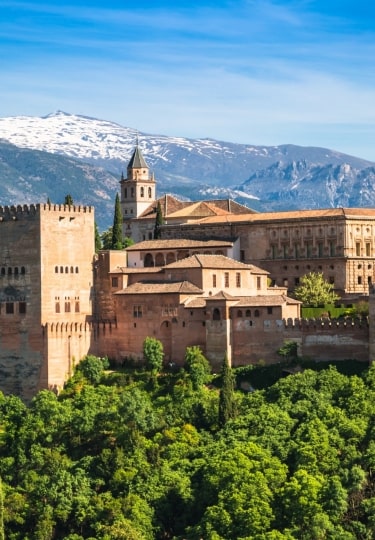From the highlands of Scotland to the sun-kissed shores of the Mediterranean, the best castles in Europe range from ornate chocolate-box palaces filled with royal intrigue to imposing monuments of medieval Moorish rule.
These castles are not just relics of the past, either; they form parts of living stories where art, conflict, and romance all come together. How to rank them then may be a choice more fitting for a king or queen, but travel around Europe and you’ll soon choose your own crown jewels.
Castelo De São Jorge, Lisbon, Portugal

Castelo De São Jorge in Lisbon, Portugal
Sitting guard over the Santa Maria Maior district of the Portuguese capital, St. George’s Castle (to give it its English name) proudly takes its place among the best castles in Europe.
Originally a Moorish residence dating from the 6th century AD, the castle was destroyed by earthquakes and rebuilt several times over the centuries, leaving it an almost total ruin until it was totally restored in the early 20th century.
Visitors can take in magnificent views of Lisbon from its ramparts, dine in the elegant restaurant, or relax in its shaded gardens.
Acropolis, Athens, Greece
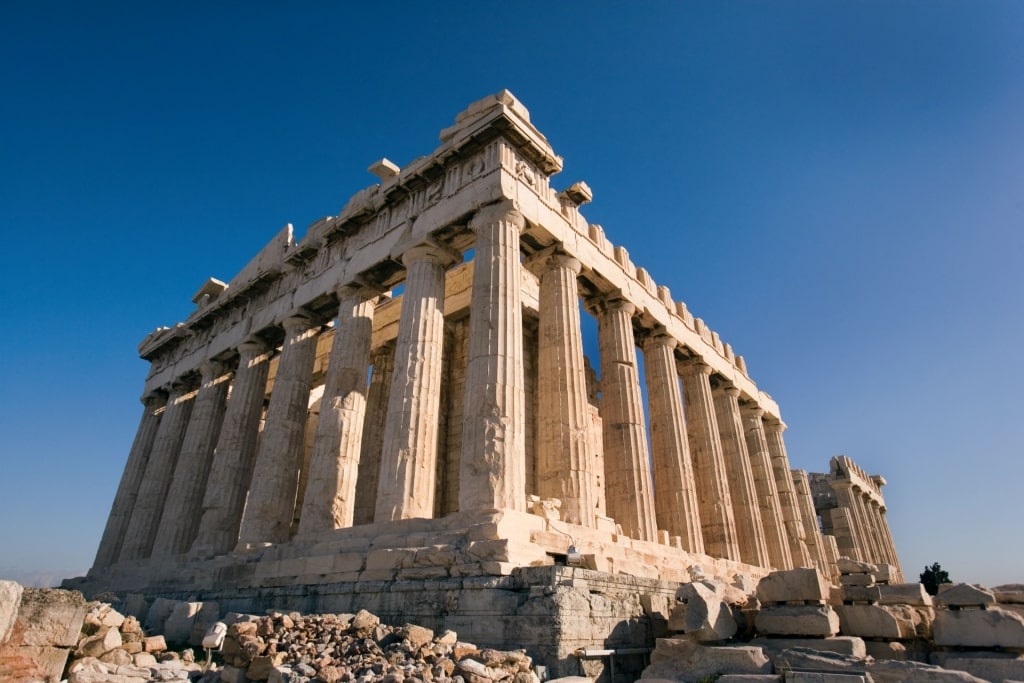
Acropolis in Athens, Greece
In a Greek city where ancient ruins seemingly sit on every corner, Athens’ crowning glory, the Acropolis, dominates the skyline from its lofty perch on a limestone hill.
Taking its name from the Greek for “city on the edge” or “city on high”, the ancient citadel was a 5th century BC gift of Greek politician and general Pericles to Athens and remains a prime reason to visit.
At its highest point sits the majestic Parthenon, a temple dedicated to the goddess Athena and the high point of classical Greek art, surrounded by other icons including the Propylaea ceremonial gates and the Temple of Athena Nike.
The foothills are also worth exploring thanks to the 2nd century Odeon of Herodes Atticus theater and the Ancient Agora marketplace.
La Alcazaba & the Castillo de Gibralfaro, Malaga, Spain
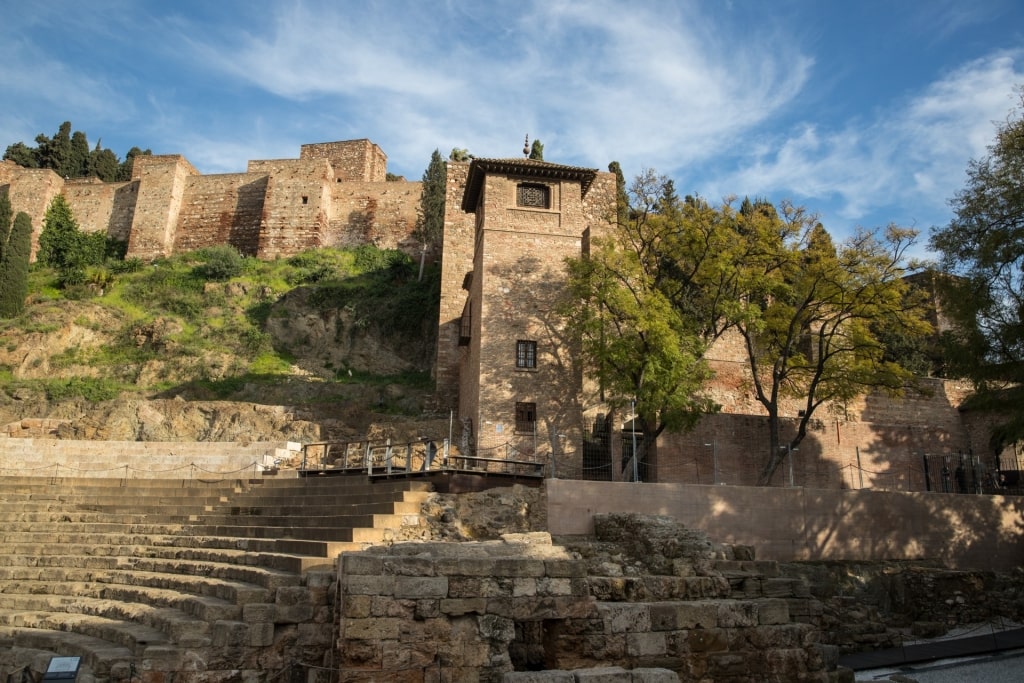
La Alcazaba in Malaga, Spain
For a relatively small city on Spain’s Costa del Sol, Malaga certainly punches above its weight, so much so that it is home to not one, but two iconic European castles.
The birthplace of Pablo Picasso plays host to both the magnificent Alcazaba and neighboring Castillo de Gibralfaro. The former rises high above the skyline, a vast, Moorish-era fortification dating from the 11th century. It’s regarded as one of the best examples of an Islamic citadel in the country.
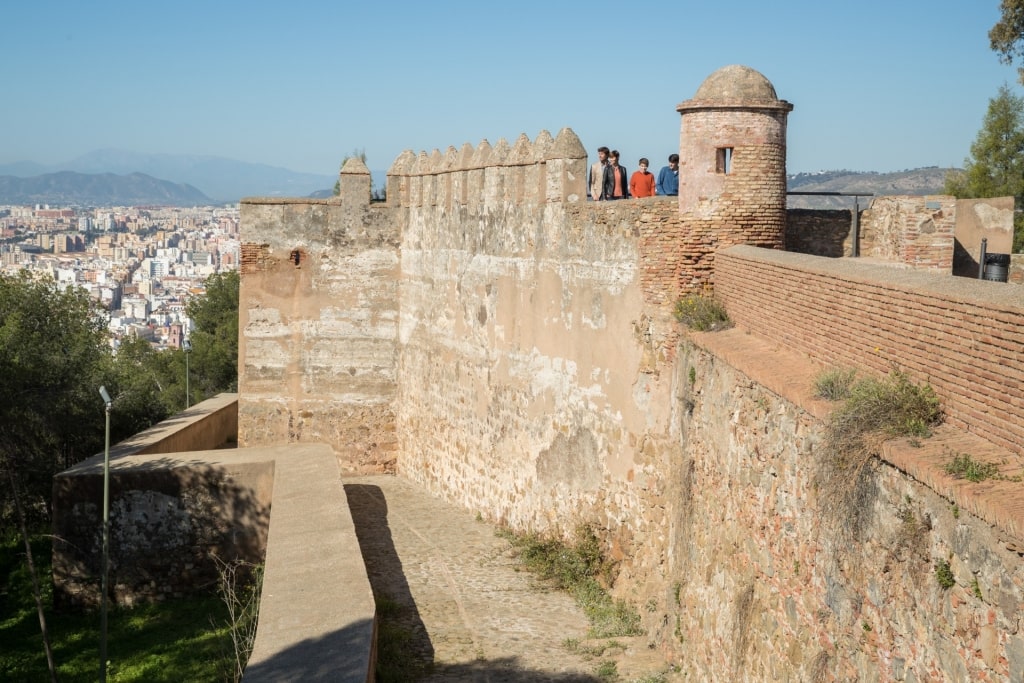
Castillo de Gibralfaro in Malaga, Spain
Across the same hill lies the Castillo which dates from 100 years earlier. Originally built as a lighthouse and fort, its ramparts overlook the city and the shimmering Mediterranean in the distance.
Palace of the Grand Master of the Knights of Rhodes, Greece
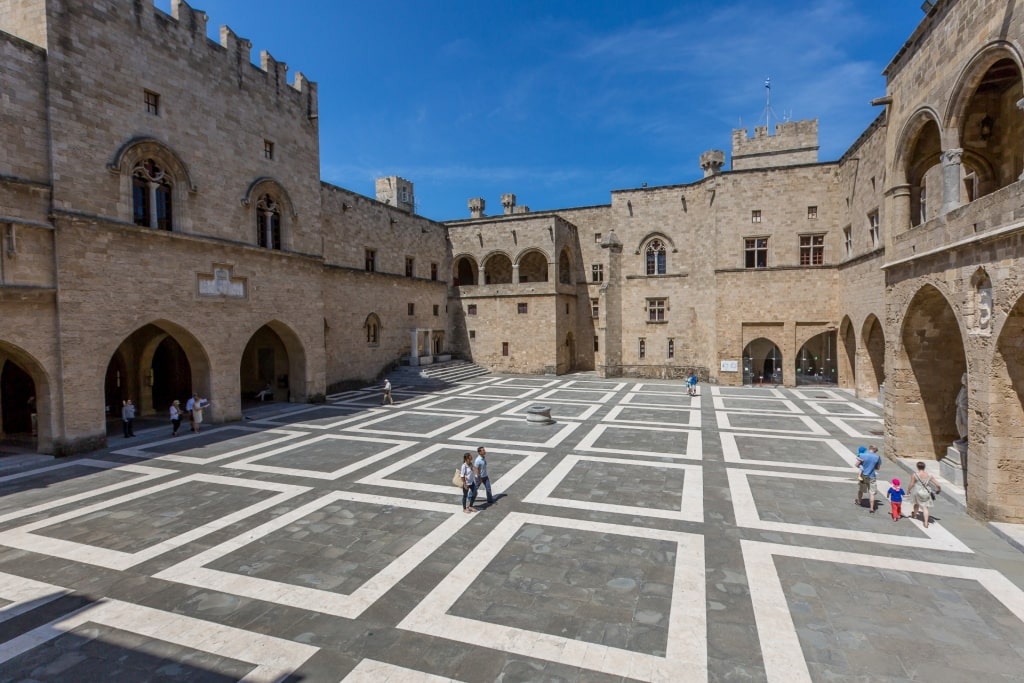
Palace of the Grand Master of the Knights of Rhodes, Greece
If the phrase “Greek island” conjures up images of whitewashed cubist buildings lining a pretty harbor, it’s time to think again when it comes to Rhodes.
The island played a huge role during the Crusades thanks to it being home to the Knights Hospitaller after they fled Jerusalem in the 13th century. Their legacy is the Old Town capital, a magnificent walled city that is said to be the oldest working medieval town in Europe.
At its heart lies the imposing Greek landmark Palace of the Grand Master, a 158-room complex of towers and turrets of which 24 can host visitors, who get to see multi-colored marbles and antique furnishings.
Of these, the elegant Ballroom and beautiful Music Room are highlights, while there’s also a mosaic of the gorgon Medusa that dates from the 2nd century BC.
Rosenborg Castle, Copenhagen, Denmark
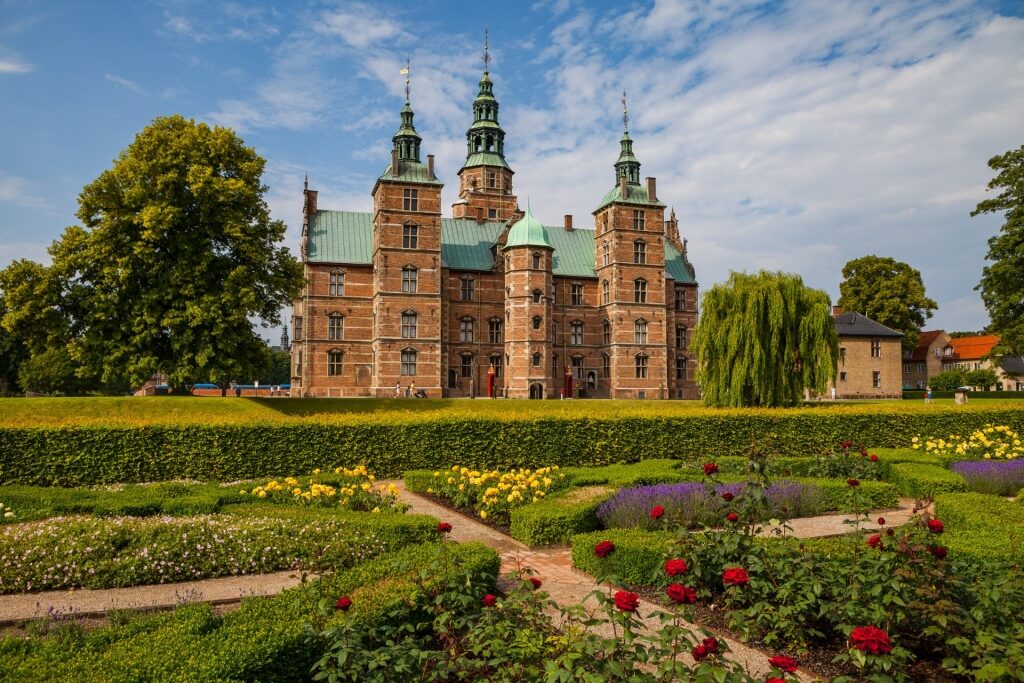
Rosenborg Castle in Copenhagen, Denmark
If you’ve ever imagined yourself as a fairytale princess or prince, Copenhagen’s Rosenborg Castle is for you. Set in the heart of Copenhagen and surrounded by the extensive Rosenborg Castle Gardens, this turreted fortification was built in the Dutch Renaissance style in the early 17th century.
A former summer house for King Christian IV, the castle houses both the Crown Jewels in the majestic Treasury and some impressive Royal chambers, including Christian’s bedroom and writing room. The gardens are also home to other significant buildings, including the barracks of the Royal Life Guard that watch over the castle.
Read: Best Things to Do in Copenhagen
Belfast Castle, Belfast, Northern Ireland
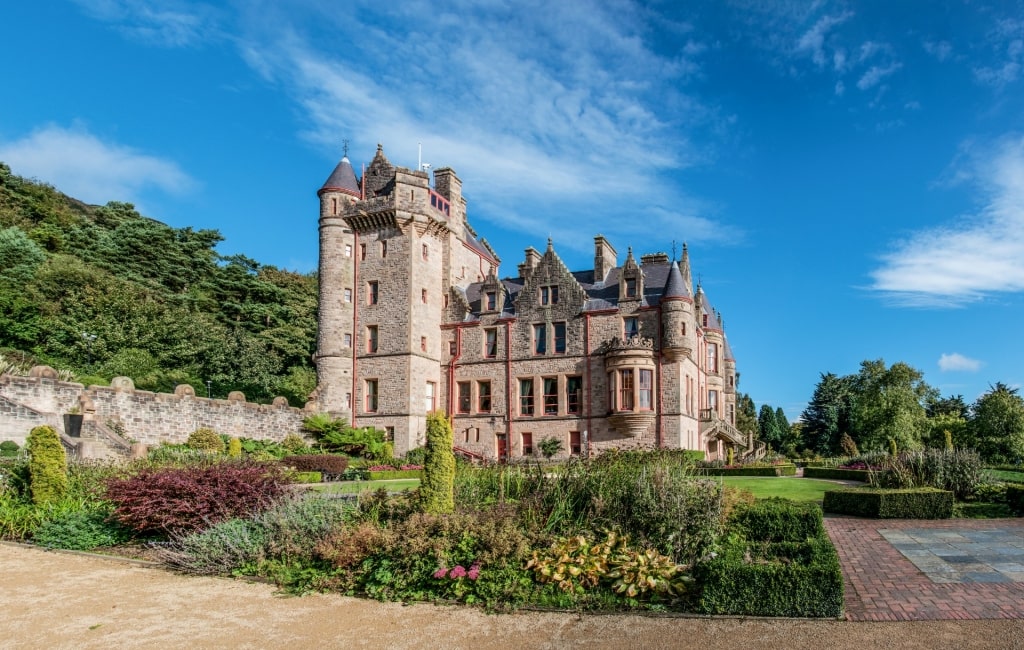
Belfast Castle in Belfast, Northern Ireland
Why is Belfast Castle considered by many to be one of the best castles in Europe? Quite simply because it has the best views over the capital of Northern Ireland, sitting in bucolic Cave Hill Country Park some 360 feet above Belfast, with vistas reaching far and wide.
There’s been a castle here since the Norman era, although the handsome Victorian mansion house here now only dates from 1870 and was given over to the city in 1934.
There’s little to recommend inside the Irish castle itself as it largely functions as a wedding and events venue, but the castle’s gardens, sweeping driveway and surrounding country park make up enough reasons to visit.
Windsor Castle, Windsor, England
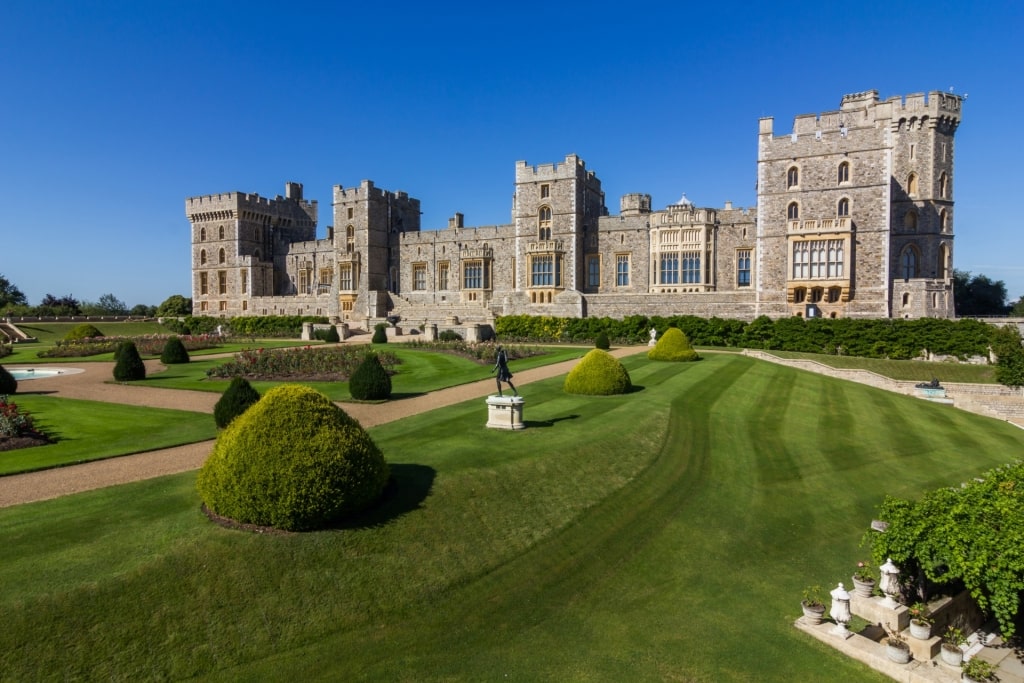
Windsor Castle in Windsor, England
Mention the British Royal Family and inevitably, Buckingham Palace will come to mind. Impressive as their London home is though, Windsor is the castle to end all castles.
An hour from the British capital, it was built by William the Conqueror as a motte-and-bailey but subsequent additions mean it is now the oldest and largest occupied castle in the world. Taking up 13 acres of prime real estate in this leafy riverside town, the vast castle and its gardens can be visited by the public year-round.
Highlights include the State Apartments, Ceremonial Rooms, and Moat Room, as well as 15th-century St. George’s Chapel, one of the finest examples of Gothic architecture in the UK. The chapel is the resting place of the late Queen Elizabeth II and her husband, Prince Philip.
Royal Alcázar of Seville, Spain

Royal Alcázar of Seville, Spain
The skyline of Andalucía’s magnificent capital is dominated by this Islamic-era citadel. An incredible blend of Mudéjar and Spanish architecture, the Alcázar was originally a 9th-century fort that was revamped and expanded after it became a Royal Palace in the mid-13th century.
Perhaps the most notable addition to this Spanish landmark was the 14th-century Palacio de Don Pedro, a stunning piece of Islamic architecture designed and constructed by the finest minds of the era. Many consider this to be the Alcázar’s crowning glory.
Nowadays, the castle remains both a royal residence and a UNESCO World Heritage Site, but it is open to the public. Visit the incredible gardens and catch a glimpse into the enchanted life of the Spanish royals.
Read: Best Things to Do in Seville
The Royal Palace, Stockholm, Sweden
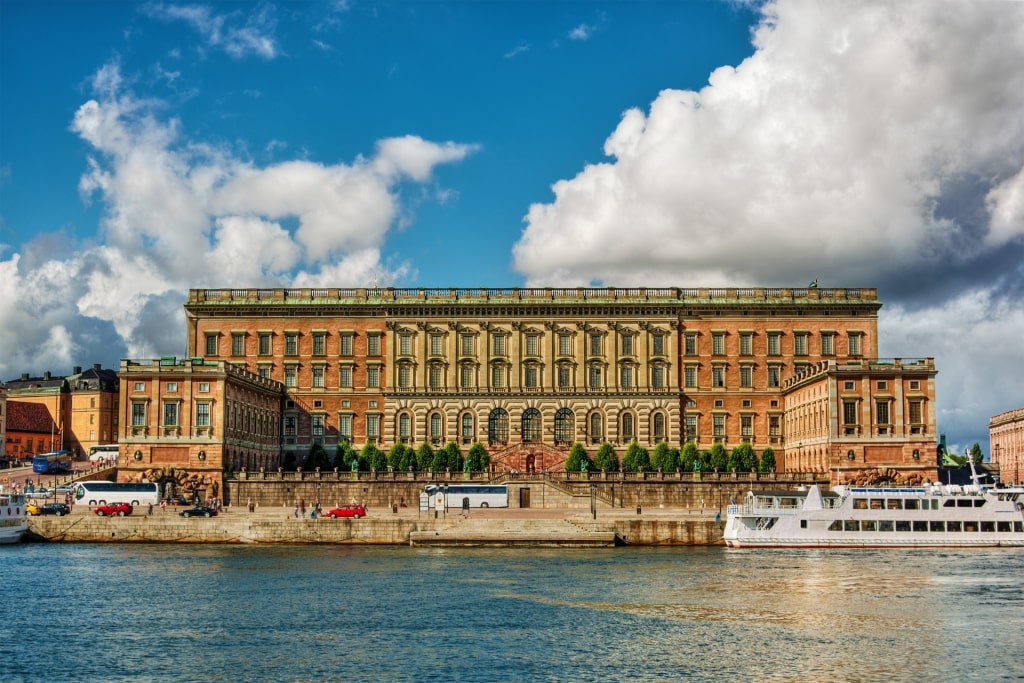
The Royal Palace in Stockholm, Sweden
Taking up a large section of Gamla Stan in Stockholm, the island that makes up the Old Town, the official residence of Sweden’s Royal Family has stood on this spot in various forms since the 13th century.
To say the current Baroque-style building dating from the mid-1800s is vast is an understatement: the building consists of more than 1,400 rooms, a mixture of State Apartments, Guest Apartments, grand halls, reception rooms, and offices.
Sweden’s royals tend to work at the Royal Palace but live in the 16th-century Drottningholm Palace, some eight miles from the city center.
Visitors get to see those Royal Apartments, Royal Chapel, as well as three of the best museums in Stockholm. Riddarholmen Church, a short walk from the main building and the chapel where royal burials take place can also be visited.
Edinburgh Castle, Edinburgh, Scotland
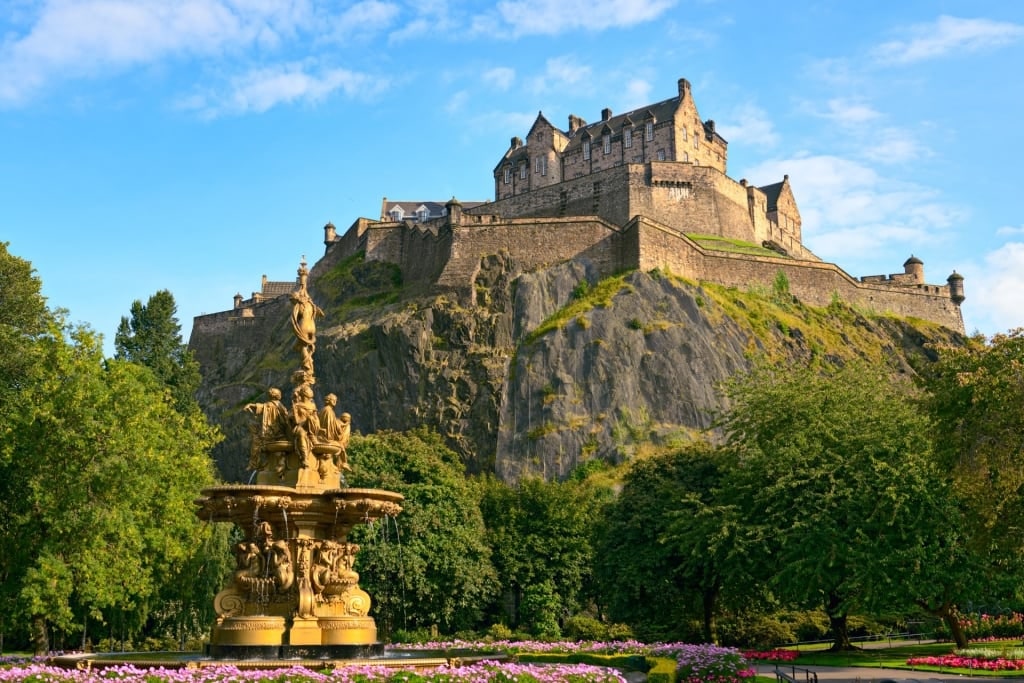
Edinburgh Castle in Edinburgh, Scotland
Said to be the most attacked building in Great Britain, with 26 sieges over its 1,100-year history, Edinburgh Castle now comes under a different type of siege. Its 2.2 million annual visitors make it Scotland’s most popular paid tourist attraction by far.
The castle is set atop Castle Rock, looking loftily over the Old Town of Edinburgh. It’s thought that people have lived on this spot since the Iron Age. But it was Michael III who first built a royal palace here in the late 11th century. Since then, the castle has provided a variety of roles, including prison, arsenal, and treasury.
Today it’s a Scheduled Ancient Monument, home to three regiments or guards, various chapels, and former Royal Apartments, as well as much pomp and pageantry on significant holidays and during the annual Royal Edinburgh Military Tattoo. Taking place in August, the Tattoo features the massed pipes and drums of the Scottish regiments in a series of spectacular parades.
Read: Remarkable Things Scotland Is Known For
Blarney Castle, Cork, Ireland
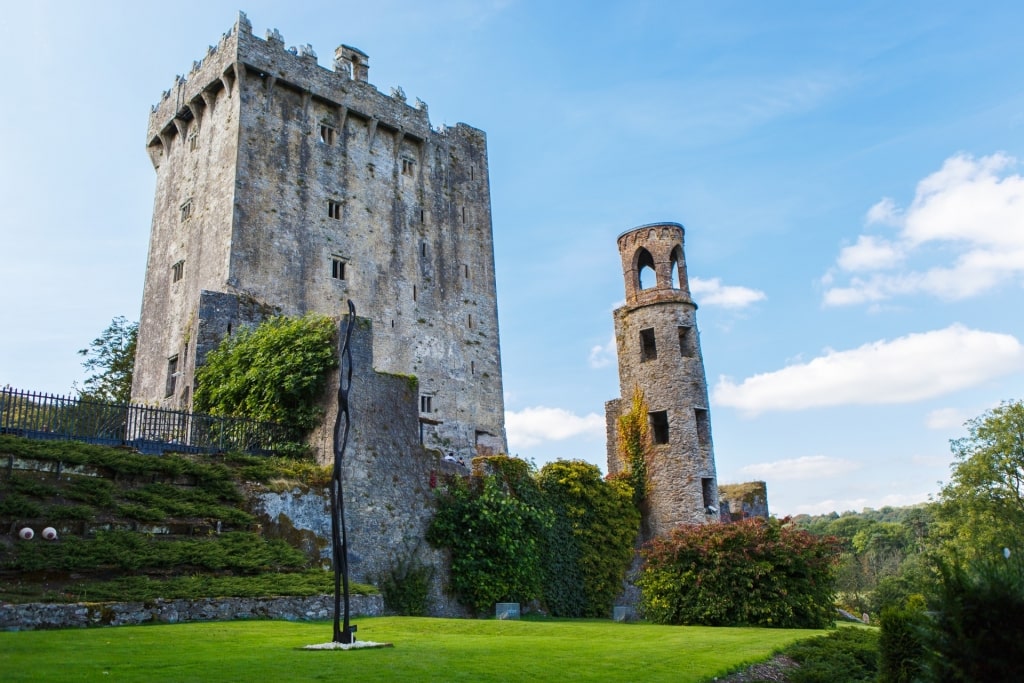
Blarney Castle in Cork, Ireland
If castles are the birthplaces of myths and legends, few can beat this tower house fortification in Cork, dating from 1446 when it was built by Munster King Dermot Mccarthy.
One of the best things to do in Cork, kissing the Blarney Stone—said to bestow the gift of the gab to those who partake—is a rite of passage on any trip to the Emerald Isle. Set into the castle’s fortifications, the stone’s exact origins and those of the legend are ambiguous at least, but kissing it is no mean feat.
Those who choose to do so need to ascend to the castle peak and lean backward over the parapets to press their lips against the cold, damp stone.
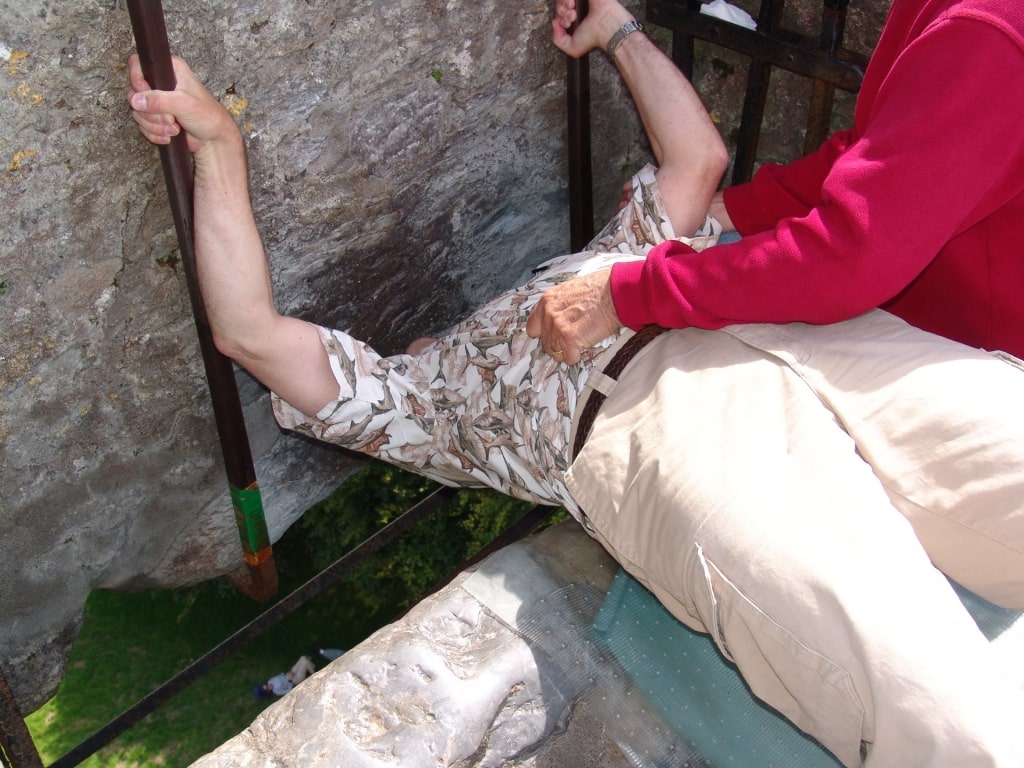
Blarney Castle in Cork, Ireland
While it makes for great social media images, this strange ritual is not the only reason to visit. The castle’s thick stone walls provide protection for a banqueting hall and a dungeon, while the 60-acre ornamental gardens are home to walking paths, arboretums, and avenues.
Castel Sant’Angelo, Rome, Italy
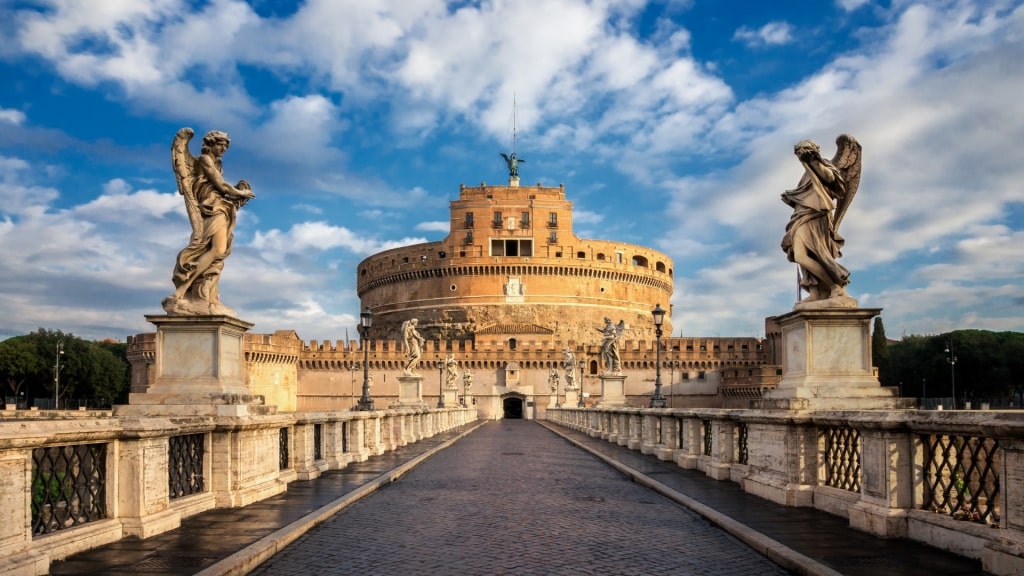
Castel Sant’Angelo in Rome, Italy
Set in Rome’s Parco Adriano on the right bank of the River Taber, this towering rotunda was originally built by Emperor Hadrian as a mausoleum for himself and his family.
The castle’s conversion to a fortress in the fourth century and subsequent sacking by various invaders, including the Goths in the sixth century, left it in ruins for many years until it became a papal fortress in the 1400s.
This Roman landmark is now a museum with a grand collection of paintings, military memorabilia, and sculptures, it is also worth visiting for the magnificent views from the keep, which was once the tallest building in the Italian capital.
Akershus Castle, Oslo, Norway
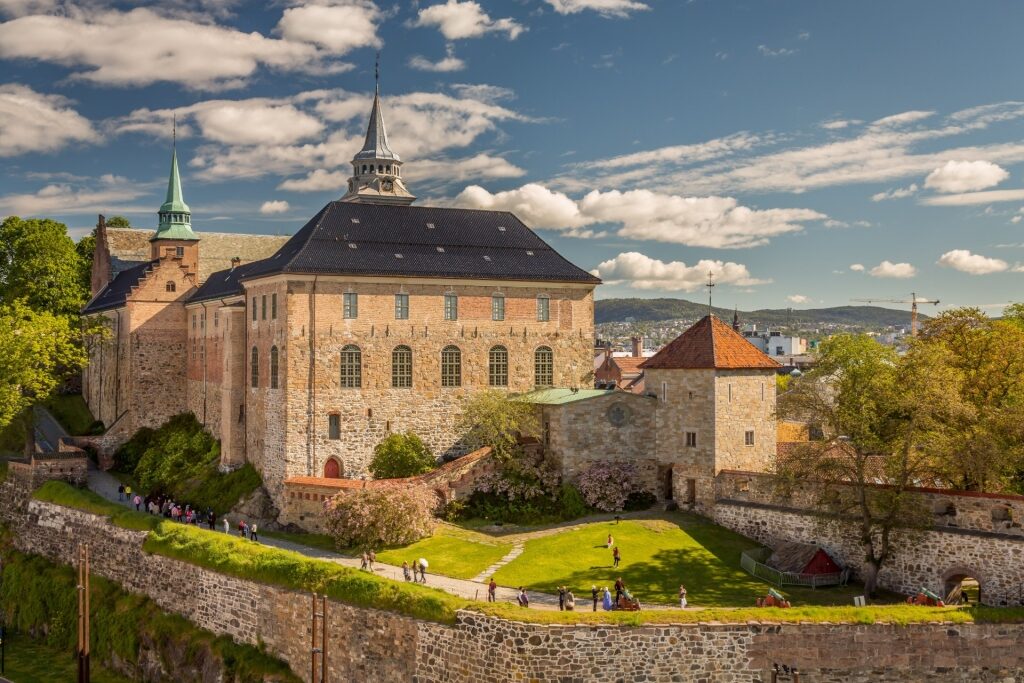
Akershus Castle in Oslo, Norway
Overlooking Oslofjord and dating from 1299, medieval Akershus Castle is another fortress lifted from the pages of a fairy tale, thanks to it being redeveloped in Renaissance style in the 17th century.
Jointly administered by the Norwegian crown, government, and army, over the years it has served as a prison, military base, royal residence, and the office of the Prime Minister. Now, it’s one of the most visited attractions in Oslo. Areas open to the public include banquet halls, reception rooms, two museums, and a historic church that is the Norwegian royal family’s mausoleum.
Read: Things to Do in Oslo
Castel Nuovo, Naples, Italy
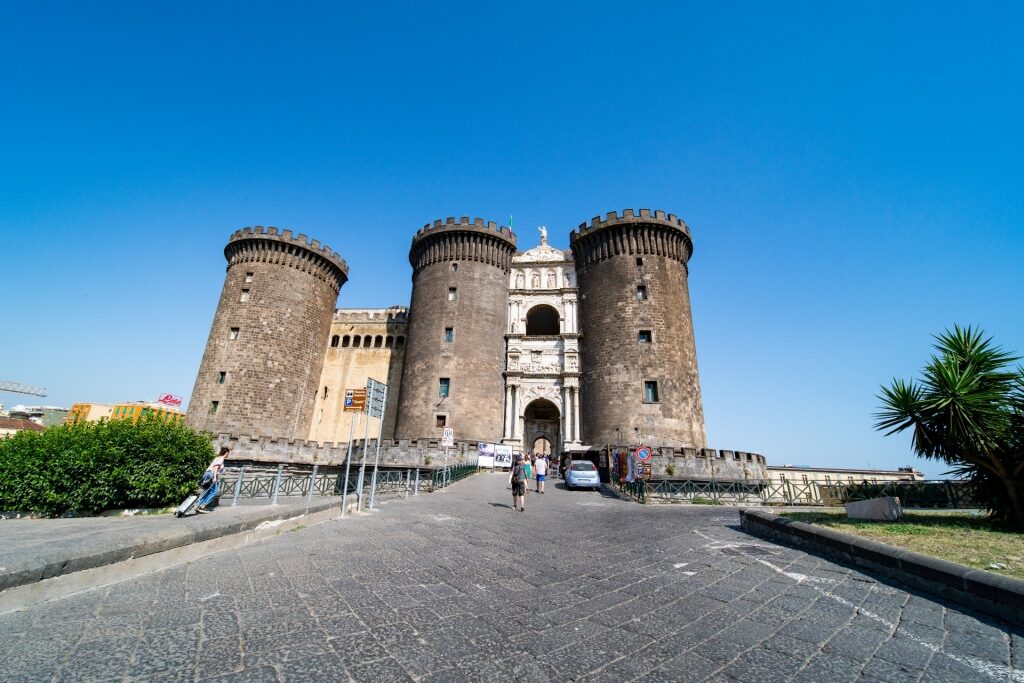
Castel Nuovo in Naples, Italy
Sitting proudly on the waterfront by the Port of Naples is this striking medieval castle dating from 1279.
Formerly the royal seat for the kings of Naples, Aragon, and Spain, Castel Nuovo looks just like a castle should. Elevated for better views over the bay, its staunch walls feature an imposing turreted tower on each corner, while the main entrance is an ornate white marble arch that commemorates Alfonso of Aragon.
Today, fascinating tours take in the castle museum, secret passageways, former prisons, and the rooftop terrace from which the views are as majestic as the castle itself.
Kadriorg Palace, Tallinn, Estonia
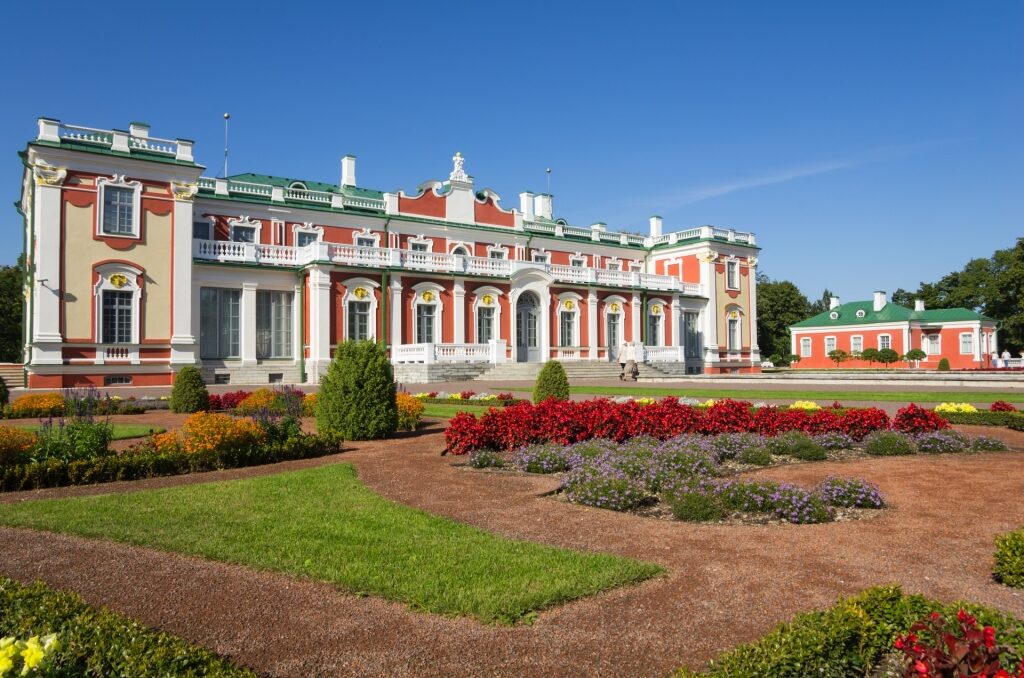
Kadriorg Palace in Tallinn, Estonia
Constructed by Peter the Great of Russia in 1718 and designed by Italian architect Nicola Michetti, Kadriorg in Tallinn is one of the finest examples of Baroque architecture in northern Europe.
Peter built the castle in honor of his wife, Catherine I, modeling it with Michetti on France’s Palace of Versailles and surrounding it with elegant gardens with flower beds, fountains, and hedges.
Visiting here is one of the best things to do in Tallinn. Today, it acts as an art museum, displaying works from Western Europe and Russia that date from the 16th to the 20th centuries.
Alhambra Palace, Granada, Spain
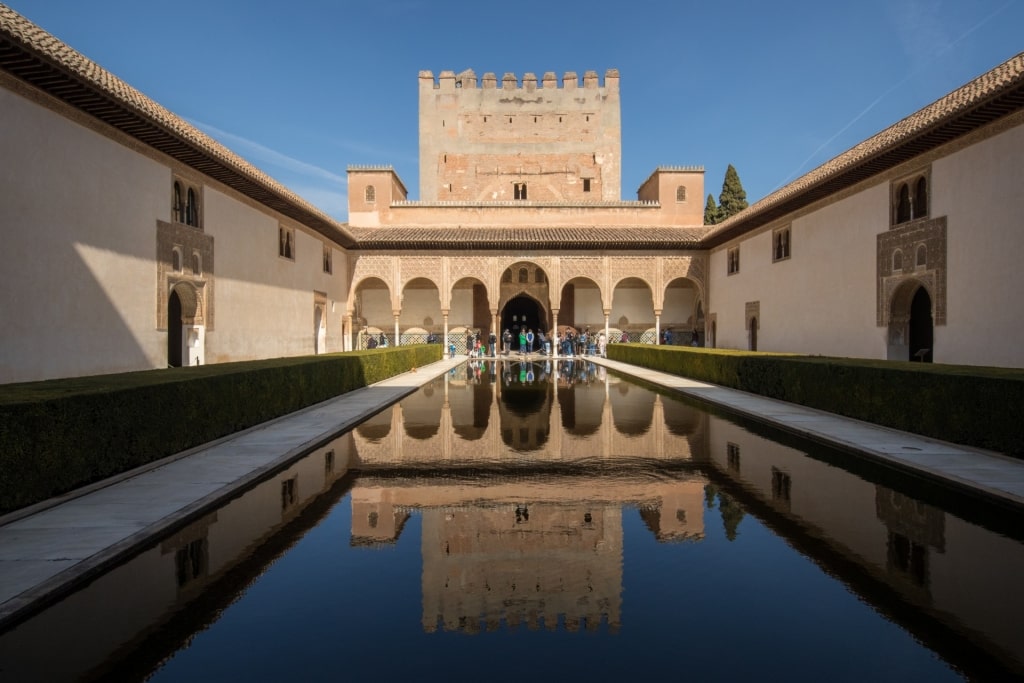
Alhambra Palace in Granada, Spain
Standing on a leafy hill against the backdrop of the Sierra Nevada mountains, the Alhambra certainly holds the attention on a visit to Granada in Southern Spain.
Not only is it a vast, irregularly shaped maze of walls, turrets, mosques, and minarets, but the reddish color of its walls sets it apart from the surrounding foliage.
If it’s an impressive sight from the ground, up close, the palace is simply astounding. The complex is home to perhaps the finest examples of Islamic palaces in Europe.
The 14th-century Palacios Nazaríes and the Generalife gardens are highlights of a visit, but you could spend days here and still fail to take in all there is to see.
Read: Best Places to Visit in Europe
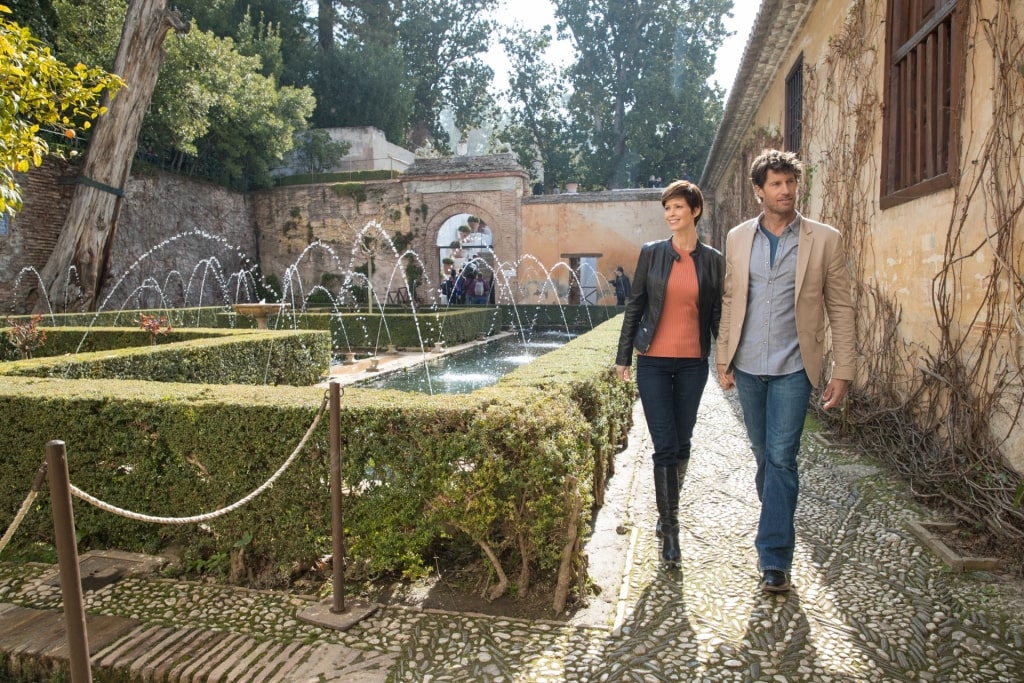
Alhambra Palace in Granada, Spain
Create your own myths and legends on your next European cruise with Celebrity Cruises. Browse itineraries and plan your dream cultural odyssey.
